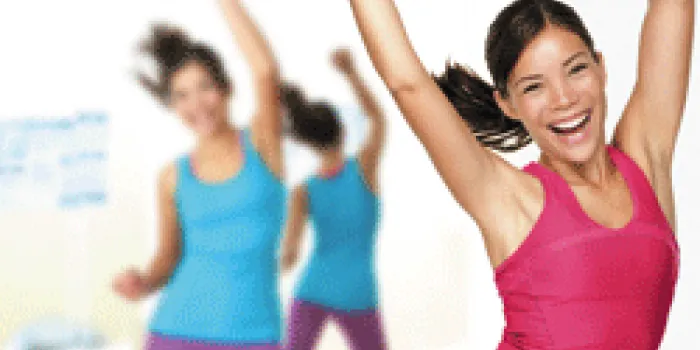When it comes to music and movement, everyone has an innate rhythm. The pulse of reggae, the gliding feel of waltz or the inspiring lyrics of your favorite pop singer may be what motivates you to move. These days, you can learn to dance to these musical styles and more. Jump into a Latin dance class and you might be pleasantly surprised by how fun it is to move and sweat to the happy beat with others.
Most styles of dance are safe for people with bleeding disorders. Callie Clark, 22, who has moderate to severe type 1 von Willebrand disease (VWD), has been dancing since she was 2. Her mother owned a dance studio, so she learned a variety of dance styles over the years. Clark’s dance résumé includes everything from tap to contemporary. She danced her way through college. This year she worked on “Dance with the Military Stars for the Armed Forces,” a fundraiser in Toledo, Ohio, to help war veterans with PTSD and chronic brain injuries.
“Dance keeps your body moving and is not as high impact as some other sports,” Clark says. “If there is an injury, I treat. With bruises, I take it easy on that area.”
Fitness through dance
“Before you begin any new physical activity, consider any previous injuries and your current fitness level,” advises Angela Forsyth, PT, DPT, a physical therapist with BioRx Hemophilia Services in New Jersey. “Learn about the dance style, as you might have to modify it for a bleeding disorder.”
Look for classes at health clubs, park districts, community centers and dance studios. Zumba® is a high-energy experience with percussive Latin music, such as salsa, merengue and reggaeton, a blend of reggae, Latin music and rap. You’ll move to music from other countries all over the globe. Many teachers include Middle Eastern belly dancing and moves from West Africa and India. Some classes are more high impact than others.
A good place to start is with Zumba Gold or Zumba Toning. Zumba Gold is a modified low-impact version marketed to an older crowd. But don’t let that fool you. The classes will still increase your heart rate even though you won’t be jumping around as much, which is safer when you have a bleeding disorder. Likewise, a Zumba Toning class has more moderately paced routines and uses “toning” sticks. The sticks are plastic and weigh about a pound; small beads inside make the sound of maracas. Shaking them not only tones your arms, but elevates your heart rate without increasing impact on your ankle and knee joints.
On the opposite end of the spectrum is Nia®. This dance class is set to hypnotic, New Age music. You’ll hear a variety of tempos, tinkling wind chimes, lyrical flutes and hard-driving drums. Nia has choreography, but it encourages self-expression. “It’s about learning how to move from the inside out,” explains Margaret Armour, a certified instructor in Evanston, Illinois.
Nia blends dance and martial arts, and asks dancers to be mindful of how they are moving. It borrows from the spirit of martial arts moves such as the flowing, tender and precise motions of tai chi. It also uses more harmonious spiral movements from aikido, along with some strong movements like blocks and punches from tae kwon do. It’s a good idea to let your instructor know what limitations you have with your bleeding disorder so she can offer you appropriate modifications, says Armour.
Other types of dance fitness classes include WERQ Fitness, which features mostly top 40 pop, rock and hip-hop, with moves inspired by music videos. BeMoved is a gentler class for all levels of fitness. It includes disco, Motown and ’80s pop music with a strong emphasis on warm-up and cool-down sequences. And the ever-popular Jazzercise classes are still around. They include everything from heart-thumping house music to Katy Perry.
Hitting the ballroom
If building relationships and being social are especially appealing to you, head to your local dance studio for partner dancing. Ballroom dances like waltz, swing and Latin dances require a lead-and-follow relationship. They can be inspiring and challenging exercise choices.
Swing is particularly cardiovascular and comes in two basic varieties: East Coast and West Coast, differentiated by the footwork and music. East Coast swing is more circular and commonly danced to big band music; West Coast is danced to contemporary music with rhythm-and-blues beats. It doesn’t have bouncy steps, making it lower impact and a better choice for people with bleeding disorders.
Tango is also a good alternative. For the real deal, seek out Argentine tango. It requires a great deal of balance, patience and creativity. As a social dance, tango is completely improvised. The follower and the leader “listen” to each other while they interpret and move to the music together. Social tango dancing requires stamina, but is a less vigorous choice compared with other ballroom dances.
Building strength, stamina and community
Dance can help reduce the likelihood of bleeds because it builds muscles, which help support joints better. It’s a weight-bearing activity, so there are also some bone-strengthening aspects. And there’s a motivating social aspect to all that sweating and communal moving.
“It’s a way to meet people and create lasting friendships,” says Clark. “Some of my dance friends are my best friends.”

